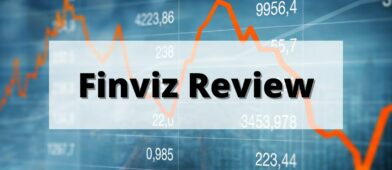Have you ever heard of the term bankers’ hours?
If you look it up in Urban Dictionary, it says:
Working or being open for the shortest and most inconvenient amount of time (~10am-4pm). Also includes a long lunch break and every possible holiday off.
For many years, banks had the worst hours. They weren’t open on weekends. They opened after you left for work and closed before you clocked out.
Nowadays it’s not nearly as bad. My brick and mortar bank, Bank of America, is open 9AM-5PM Monday – Thursday, 9AM-6PM on Friday, and 9AM-12PM on Saturday. That’s reasonable.
But the holidays… that’s actually not nearly as bad. Most banks follow the Federal Holiday schedule and that only has ten days off. The stock market adds an extra day off (Good Friday) and has a few shortened days.
So the financial industry has wised up. The more they’re open, the more they can make!
Is Martin Luther King Jr. Day a bank holiday? YES, it is, MLK Jr. Day is a bank holiday.
It is recognized as a holiday by the Federal Reserve System and all banks will be closed. Online banking and ATMs are still available but branches will be closed.
The New York Stock Exchange and Nasdaq will be closed too.
So here are the days they are closed:
Table of Contents
Bank Holidays
The bank holidays follow the holiday schedule of the Federal Reserve System… and it’s great! Throughout the year, you get 10 days off.
It’s important to know these days even if you won’t be going to a bank. If you plan on making a deposit, transfer, bill pay, or other online bank activity – banks won’t process them on a day they are closed. It seems silly considering a human being probably never gets involved, so computers can still do the work on a “closed day,” but that’s how they’ve chosen to operate.
Not every bank (or credit union) follows this holiday schedule. They can opt to be closed for other days or not be closed on days observed by the Federal Reserve system. The list below is just for the Federal Reserve system.
Those days are:
- New Year’s Day – Always January 1st
- Inauguration Day – Always January 20th (every four years)
- Martin Luther King Jr Day – Third Monday of January
- Washington’s Birthday (a.k.a. President’s Day) – Third Monday of February
- Memorial Day (a.k.a. Decoration Day) – Last Monday in May
- Juneteenth – Always June 19 (established 2021)
- Independence Day – Always July 4th
- Labor Day – First Monday in September
- Columbus Day (a.k.a. Indigenous People’s Day) – Second Monday in October
- Veterans Day – Always November 11
- Thanksgiving Day – Fourth Thursday of November
- Christmas Day – Always December 25th
(Not all banks observe Inauguration day)
If the holiday falls on a Saturday that year, then the holiday is not always observed. It may be observed on Friday or the following Monday.
If the holiday falls on a Sunday, it is observed the following Monday.
Here are the dates for the next five years:
| Holiday | 2021 | 2022 | 2023 | 2024 | 2025 |
|---|---|---|---|---|---|
| New Year’s Day | Jan 1 | Jan 1* | Jan 1** | Jan 1 | Jan 1 |
| Inauguration Day | Jan 20 | – | – | – | Jan 20 |
| Martin Luther King Jr Day | Jan 18 | Jan 17 | Jan 16 | Jan 15 | Jan 20 |
| Washington’s Birthday | Feb 15 | Feb 21 | Feb 20 | Feb 19 | Feb 17 |
| Memorial Day | May 31 | May 30 | May 29 | May 27 | May 26 |
| Juneteenth | June 19 | June 19 | June 19 | June 19 | June 19 |
| Independence Day | July 4** | July 4 | July 4 | July 4 | July 4 |
| Labor Day | Sept 6 | Sept 5 | Sept 4 | Sept 2 | Sept 1 |
| Columbus Day | Oct 11 | Oct 10 | Oct 9 | Oct 14 | Oct 13 |
| Veterans Day | Nov 11 | Nov 11 | Nov 11* | Nov 11 | Nov 11 |
| Thanksgiving Day | Nov 25 | Nov 24 | Nov 23 | Nov 28 | Nov 27 |
| Christmas Day | Dec 25* | Dec 25** | Dec 25 | Dec 25 | Dec 25 |
* The holiday fell on a Saturday so there is no bank holiday.
** The holiday fell on a Sunday so the banks are closed the following Monday.
Stock Market Holidays
The New York Stock Exchange and the NASDAQ follow a similar schedule to the banks but it’s not exactly the same. They observe all the bank holidays except Columbus Day and Veterans Day. They add Good Friday, the Friday preceding Easter Sunday.
They also have a few days where they are closed early at 1 PM – the day before Independence Day, the day after Thanksgiving, and Christmas Eve in certain cases (more on that below).
In full, they observe these nine days:
- New Year’s Day – Always January 1st
- Martin Luther King Jr Day – Third Monday of January
- Washington’s Birthday (a.k.a. President’s Day) – Third Monday of February
- Good Friday – Friday before Easter Sunday
- Memorial Day (a.k.a. Decoration Day) – Last Monday in May
- Juneteenth – Always June 19th
- Independence Day – Always July 4th
- Labor Day – First Monday in September
- Thanksgiving Day – Fourth Thursday of November
- Christmas Day – Always December 25th
The following just lists the non-bank days:
| Holiday | 2021 | 2022 | 2023 | 2024 | 2025 |
|---|---|---|---|---|---|
| New Year’s Day | Jan 1 | Jan 1* | Jan 1** | Jan 1 | Jan 1 |
| Inauguration Day | Jan 20 | – | – | – | Jan 20 |
| Martin Luther King Jr Day | Jan 18 | Jan 17 | Jan 16 | Jan 15 | Jan 20 |
| Washington’s Birthday | Feb 15 | Feb 21 | Feb 20 | Feb 19 | Feb 17 |
| Good Friday | Apr 2 | Apr 15 | Apr 7 | ||
| Memorial Day | May 31 | May 30 | May 29 | May 27 | May 26 |
| Juneteenth | not observed | June 19 | June 19 | June 19 | June 19 |
| Day before Independence Day | July 3 | July 3 | July 3 | July 3 | July 3 |
| Independence Day | July 4** | July 4 | July 4 | July 4 | July 4 |
| Labor Day | Sept 6 | Sept 5 | Sept 4 | Sept 2 | Sept 1 |
| Thanksgiving Day | Nov 25 | Nov 24 | Nov 23 | Nov 28 | Nov 27 |
| Day after Thanksgiving | Nov 26 | Nov 24 | Nov 24 | Nov 29 | Nov 28 |
| Christmas Eve | Dec 24 | Dec 24 | Dec 24 | Dec 24 | Dec 24 |
| Christmas Day | Dec 25* | Dec 25** | Dec 25 | Dec 25 | Dec 25 |
Juneteenth 2021 was not observed because the bill creating the holiday was signed into law just days before the holiday.
The stock market will sometimes close early, at 1 PM, on the following days:
- Day after Thanksgiving
- Christmas Eve, if it is a weekday
- July 3rd, if July 3rd and 4th are weekdays
Now you know when banks are closed and when the stock market will be closed or closed early!




You left out president’s day
It’s on there – it’s also known as Washington’s Birthday.